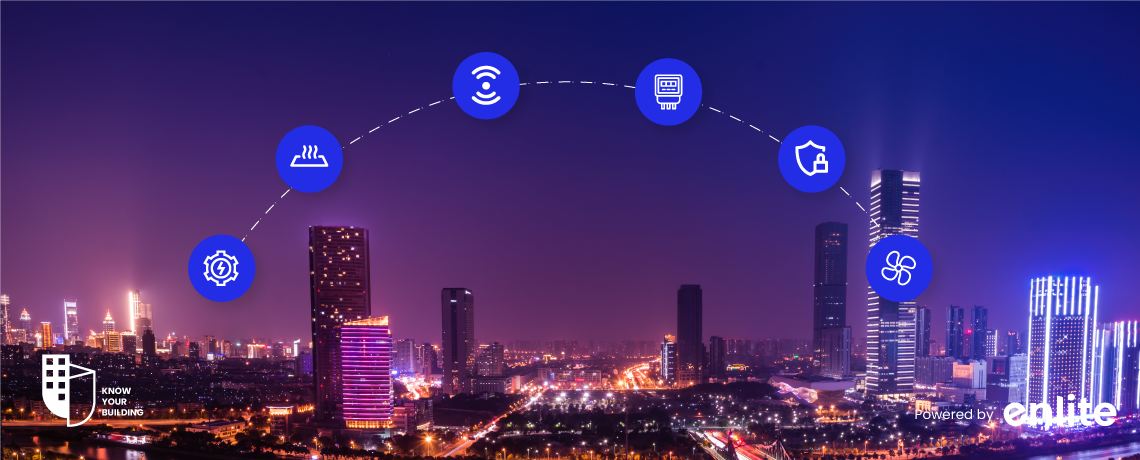Introduction
In the ever-advancing landscape of modern technology, the efficient management of buildings has become a paramount concern. This is where Building Management Systems (BMS), also known as Building Automation Systems (BAS), take center stage. BMS serves as a sophisticated network of hardware and software components, ensuring that a building’s systems function optimally. Most older buildings require retrofitting to incorporate building management systems. However, in today’s construction landscape, it is rare to find a new building that doesn’t have an integrated BMS. In these modern constructions, all the capabilities are seamlessly incorporated into the building’s design from day one, and the components are controlled by a master control system.
In this blog, we will embark on a journey to understand the core components of a Building Management System.
Sensors and Input Devices
Sensors and input devices act as the eyes and ears of a BMS. They collect data from various systems within the building, ensuring that the BMS has real-time information to make informed decisions. Some common types of sensors include:
- Temperature Sensors: Temperature sensors play a vital role in maintaining comfort and energy efficiency within a facility. These sensors, strategically placed throughout the building, monitor ambient temperature in different zones, enabling the BMS to adjust heating, ventilation, and air conditioning (HVAC) systems accordingly. This precise control ensures that occupants enjoy a comfortable environment while optimizing energy consumption, making temperature sensors a cornerstone of intelligent building management.
- Humidity Sensors: Humidity sensors are deployed to monitor and regulate relative humidity levels within a building. These sensors help ensure occupant comfort and maintain optimal conditions for various processes and equipment. By constantly measuring and controlling humidity, BMS can prevent issues such as mold growth, improve indoor air quality, and enhance energy efficiency, making humidity sensors an essential tool in creating a healthy and sustainable building environment.
- Occupancy Sensors: These are employed to detect and respond to human presence within a building. These sensors help optimize energy consumption by automatically adjusting lighting, HVAC systems, and other building services based on real-time occupancy data. By promoting energy efficiency and occupant comfort, occupancy sensors play a significant role in the intelligent and sustainable management of building resources and spaces.
- CO2 Sensors: They monitor indoor air quality by measuring carbon dioxide levels within a building. These sensors are instrumental in ensuring optimal ventilation and comfort for occupants, as well as enhancing energy efficiency. By detecting and controlling CO2 levels, BMS can adjust ventilation rates and air quality measures, providing a healthier and more sustainable indoor environment while reducing energy waste, making CO2 sensors a key component in modern building management strategies.
- Light Sensors: Light sensors contribute to energy efficiency by monitoring and regulating lighting within a building. These sensors adjust artificial lighting based on natural light levels, occupancy, and time of day, ensuring that spaces are well-lit when needed and conserving energy when they are not. By fine-tuning lighting based on various parameters, light sensors play a crucial role in creating an eco-friendly, comfortable, and cost-effective environment in modern buildings, aligning with sustainable and intelligent building management practices.
Controllers
Controllers serve as the brains of the BMS. They process data from sensors and input devices, making crucial decisions and sending commands to various building systems. Controllers come in various forms, including:
- Programmable Logic Controllers (PLCs): These devices execute specific control algorithms and can manage multiple inputs and outputs.
- Direct Digital Controllers (DDCs): Commonly used for HVAC and lighting control, DDCs are essentially microprocessors.
- Central Controllers: These manage multiple subsystems and ensure coordination between various components of the BMS.
Communication Networks
Building Management Systems require robust communication networks to ensure seamless data transfer between sensors, controllers, and the central monitoring and control interface. Key communication protocols include:
- BACnet: A widely utilized protocol for building automation and control networks.
- Modbus: Another prevalent protocol for connecting electronic devices.
- LonWorks: A technology designed to network devices over various media types.
- Ethernet and Wi-Fi: These provide high-speed data transfer capabilities and enable remote access to the BMS.
Building Systems
A BMS collaborates with a multitude of building systems to ensure optimal functionality. The most commonly integrated systems include:
- HVAC (Heating, Ventilation, and Air Conditioning): BMS regulates temperature and airflow to maintain comfort and energy efficiency.
- Lighting: The BMS controls lighting based on occupancy, time of day, and natural light levels to conserve energy.
- Access Control: Managing access through electronic key cards, biometrics, or other security measures.
- Fire and Life Safety: Monitoring fire alarms, sprinklers, and emergency lighting systems.
- Energy Management: BMS optimizes energy consumption by controlling power usage during non-peak hours.
- Water Management: Monitors water supply and consumption to reduce wastage.
User Interface
The user interface serves as the portal through which building managers and operators interact with the BMS. This interface enables users to monitor and control various building systems. User interfaces come in various forms:
- Graphical User Interfaces (GUI): These are typically software applications accessible on computers, tablets, or smartphones, providing real-time data and control options.
- Wall-Mounted Touchscreens: Installed in central locations for quick access to key information.
- Web-Based Interfaces: These allow for remote monitoring and control through secure internet connections.
Data Storage and Analysis
BMS accumulates vast amounts of data, necessitating reliable storage and analysis components integrated with the system. These functions include:
- Historical Data Logging: Capturing data over time to track trends and identify anomalies.
- Reporting: Generating reports on energy consumption, system performance, and other critical metrics.
- Analytics: Employing advanced algorithms to optimize building performance and efficiency.
Alarms and Notifications
BMS systems are equipped with alert mechanisms to inform building operators of anomalies or critical events. These alarms and notifications can take the form of emails, text messages, or on-screen alerts.














